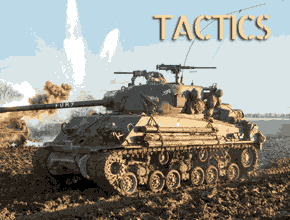There were no shortages of prototypes from Italy for a more potent tank than the light and medium models fielded in 1940. However there was also no incentive for these. Rather, obscure super-heavy tank projects were seemingly prepared by Ansalso from 1927-28, released in 1933 allegedly for USSR own endavours on the new T39 breakthrough tank. The Ansaldo GL-203 is part of these. Pure invention or a genuine find ? Let's see...

First backstory: The Ansaldo GL 203 was a Super Heavy Tank made by the Ansaldo, which found its roots to the Red Army research for a new series of breakthrough heavy tanks in the late 1920s, and while trying to produce one, lacked proper blueprints. One representive of a Soviet company travelled to Italy, met Ansaldo and asked them to draw a heavy tank to be produced back in USSR, or usable as a base for a Soviet heavy tank. Ansaldo started drawing blueprints of "GL" Heavy/Super Heavy tanks series, making several proposals. The GL 203 was the last and perhaps most refined to be drawn. The representative went back to USSR and the later took inspiration to created both the T-35 and T-39.
Note in the source, reddit, the drawing shown seems relatively "genuine", notably for the precise drawing and style of writing seen on the barrel. The name GL had "G" stabding for "Gigante", not sure about L. The number, 203, is referring to the main gun caliber, a massive 8-inches Ansaldo of the type already produced for the Regia Marina, all seven heavy cruisers from the three Trento class (Trento, Trieste, Bolzano) and the four Zara class (Zara, Fiume, Gorizia, Pola). More on this drawing, which is the base for the one showed here, in "design".
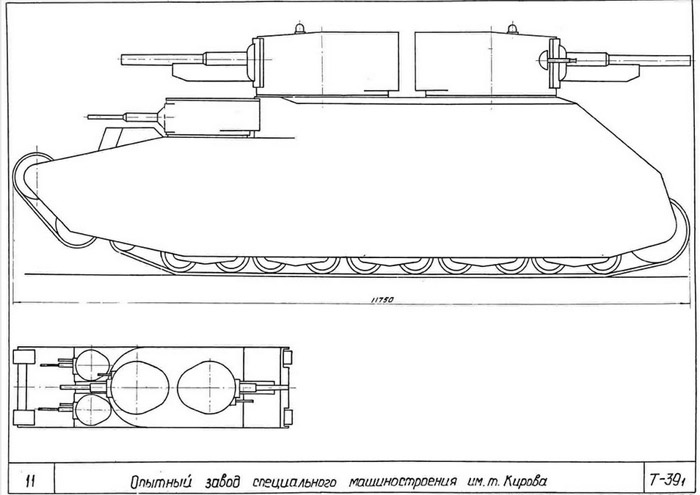
T39 project of breakthrough tank, never built and allegedly inspired by the GL series, four projects,
There is very little information on this project - no more than a few lines of text. In this regard, the team of Zinovy Alekseev's design bureau decided to carry out its reconstruction, which would take into account both the trends in Italian tank building of that time and use only historical and available modules. At the same time, the reconstruction would have to be technically and engineeringly realistic.
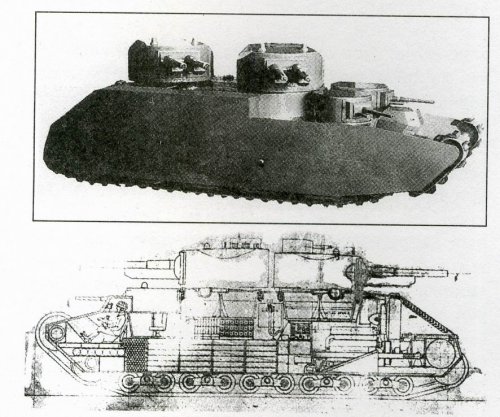
One of the first problems was armament. No 203 mm land guns were found in Italy, but an excellent candidate was found in the navy. The 203 mm L/53 Ansaldo M.27-29 gun was the main caliber of the Zara-class heavy cruisers and the Bolzano heavy cruiser. There was no talk of installing such a chthonic gun in a regular tank turret. A new one was designed, the layout of which was based on ship technologies. The hull was a modified Ansaldo P.65, strong, large and heavy enough to carry such weapons. The small-caliber turret (with 76 mm L/40 M.97) was placed in the rear of the vehicle.
The power of the main caliber gun was impressive: the tank could conduct combat operations not only against land targets, but also against sea targets - as a coastal defense vehicle. The maximum elevation angles incorporated into the reconstructed tank were sufficient to fire beyond the horizon. The characteristics of the shells would ensure the guaranteed destruction of any enemy land armored vehicles with one hit.
The T-39 was a heavy tank project designed to the late 1920's standards for a heavy tank intended for breaking through permanent fortification lines. Such a vehicle was to be armed with a 107 mm gun or a 152 mm howitzer, was to be capable of firing at at least two targets at one time and have an armour protecting from divisional guns. Six variants were designed in 1933, and - after comparison with Grote and Ansaldo projects - three more were created and built as 1:10 scale mock-ups (known from the photographs). It's hard to say which version is which, as they are mixed again and again by different authors, but it seems the version no. 8 was chosen for further development - it was to be armed with one 152 mm howitzer and three 45 mm guns in four separate turrets. The tank was to be some 90 t heavy, have 70-75 mm armour and reach 24-33 km/h with a 970-1300 hp engine (a steam engine was even concerned). The Heavy Italian Tanks Projects known were the 1925 Fiat 3000 tipo 'II', the 1933 GL series and final Ansaldo designs leading to the T-39.
Grote’s services were either refused or returned to cooperation with him. The reason for this was the backlog of the USSR in the program for creating its own breakthrough tank. Not the most famous fact is that the breakthrough tanks were thought out by the Red Army command back in the 20s, and they were inspired there not by anything, but by the French FCM 2C . It was assumed that this would be a 65-ton combat vehicle with bulletproof armor and a gun of at least 76 mm caliber. Due to the lag in work on the breakthrough tank, negotiations began with the Italian company Ansaldo from the late 1920s. This cooperation continued in the early 30s - it was no coincidence that a trip to Italy became S.A. 's only overseas trip . Ginzburg, at that time the chief designer of OKMO plant "Bolshevik".
By order of the Soviet side, the Italians developed a project for a 65-ton tank, which went into the development of OKMO - the T-39 heavy tank. By that time, the requirements were tightened: the combat weight grew to 90 tons, the armor became thicker, while the requirements for armaments also increased. At the same time, alternative options for a breakthrough tank were also being worked out. The 85-ton tank was developed under the leadership of K.K. Sirken at the Bolshevik factory. Finally, in 1933, the project of a 100-ton tank (T-42 index) was developed by Grote. However, this car was a mere trifle in comparison with what Grote worked out in 1932-1933. src.
The vehicle has two turrets, a main one which is sloped and not unlike the P26/40 in shape, hosing the gigantic 203 mm/53 main gun. The turret seems a bit shorter than a heavy cruiser equivalent, questioning the recoil management. The shells are way too large (see later) to be man-handled, so a complex hydrolic and electric system would have been necessary (also later). The rear of the sloped turret hosets two positions, to the right, the commander's cupol, complete with a LMG to fire wehile buttoned up. To its left and extreme corner of the turret's bustle is a twin mount Breda 13.2 mm AA for AA Defence. Immediately aft of the main turret and smack-banged in the middle of the engine compartment is a single "medium tank turret" roughly comparable, but different in shape, to the one of the P26/40. Then comes four large louvres and grilles to vent out the diesel's heat.
In the case of the GL-203 nothing prevents the use of a reducer and tailored gearbox based on the one used on these submarines, giving the very different regimes used for this conversion. To give an idea, 2,450 bhp is way above the MB 517 V12 diesel engine rated for 1,200 hp (895 kW) tested on V2, the prototype of the German Maus super-heavy tank. The idea of adopting a U-Boat diesel for another chimeric wartime project, the Landkreuzer P.1000 Ratte. But in that case, it had two MAN V12Z32/44 24-cyl. diesels for 12,000 to 13,000 kW (16,000 to 17,000 hp).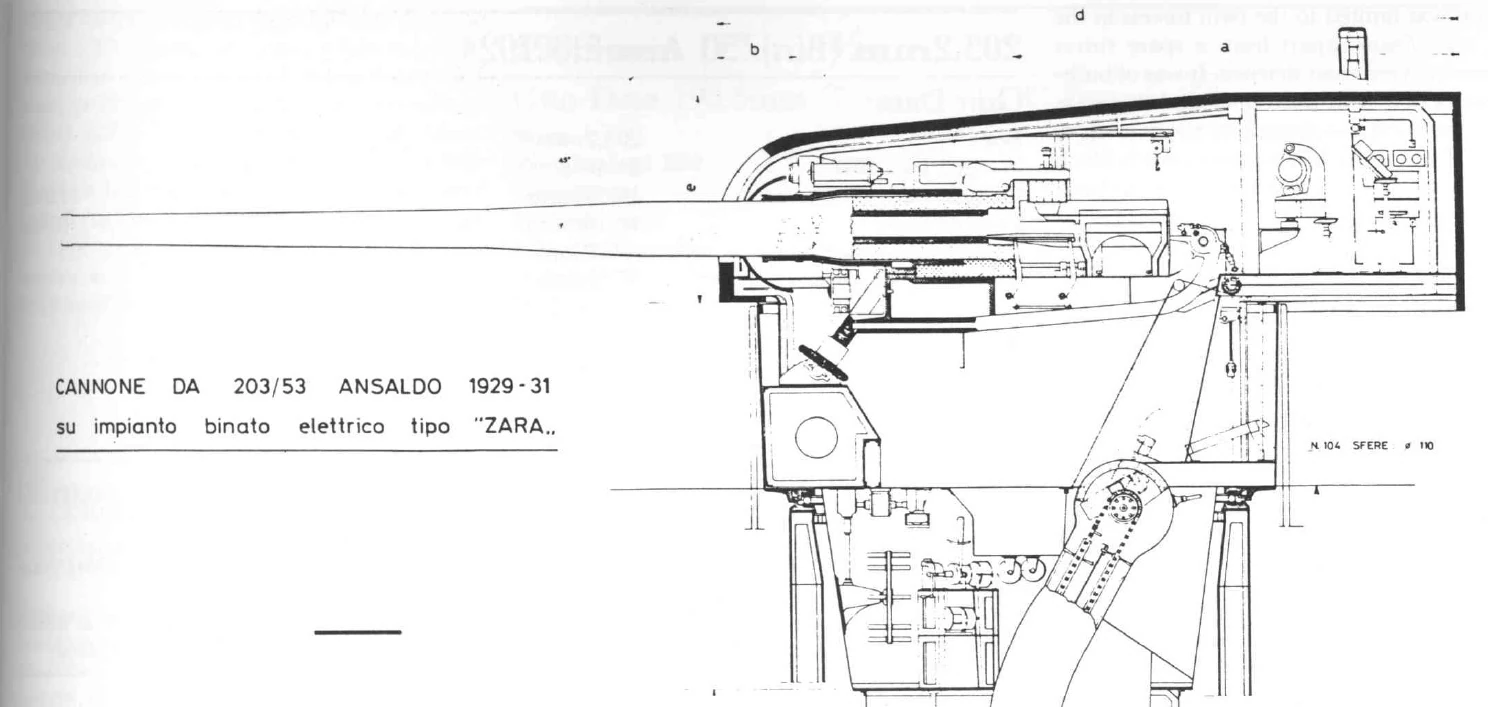
Clearly an in-house naval gun, developed in 1927 but in service from 1931 onwards, and fitted on Bolzano and the four Zara class heavy cruisers. In short, i fires a 125.3 kg (276 lb) AP or a 110.57 kg (243.8 lb) HE round at 900-940 m/sec. up to 31,300m. But the barrel alone weights 19.5 tonnes, and is 424 inches (10.8 meters) long. The smoke extraction should be quite an issue as well.
To topple it off, the said original blueprints owned by wargaming "disappeared" and all sources related to these Ansaldo profiles seems to only point out to Russian sources, and not the most reputable ones. As a company, Wargaming has been repeately flagged by the community for its countless off the hat "authentic" forgotten projects, trying desperately to renew its signature game by introducing novelties year after year, and providing little evidence for these in general. Many had been debunked already on tank encyclopedia.
Theories

First backstory: The Ansaldo GL 203 was a Super Heavy Tank made by the Ansaldo, which found its roots to the Red Army research for a new series of breakthrough heavy tanks in the late 1920s, and while trying to produce one, lacked proper blueprints. One representive of a Soviet company travelled to Italy, met Ansaldo and asked them to draw a heavy tank to be produced back in USSR, or usable as a base for a Soviet heavy tank. Ansaldo started drawing blueprints of "GL" Heavy/Super Heavy tanks series, making several proposals. The GL 203 was the last and perhaps most refined to be drawn. The representative went back to USSR and the later took inspiration to created both the T-35 and T-39.
Note in the source, reddit, the drawing shown seems relatively "genuine", notably for the precise drawing and style of writing seen on the barrel. The name GL had "G" stabding for "Gigante", not sure about L. The number, 203, is referring to the main gun caliber, a massive 8-inches Ansaldo of the type already produced for the Regia Marina, all seven heavy cruisers from the three Trento class (Trento, Trieste, Bolzano) and the four Zara class (Zara, Fiume, Gorizia, Pola). More on this drawing, which is the base for the one showed here, in "design".

T39 project of breakthrough tank, never built and allegedly inspired by the GL series, four projects,
The Russian story
In the early 1930s, work was underway in Italy to design a super-heavy tank. The initial concept of a 65-ton heavy vehicle evolved into two others - the so-called "Soviet" (T-39 program) and the "Italian" (Ansaldo GL program) (according to other sources, the T-39 program grew out of the Ansaldo GL program). Several variants of the unit were considered: with a 100 mm gun (the initial version, 65 tons), with a 107 mm gun (according to some sources, this is the Russian designation for the French 105/28 mm gun, or the Italian 105/23 or 105/35), with a 152 mm gun and a 203 mm gun as the main caliber; at the same time, a 76 mm gun was supposed to be used as a small caliber. The mass of the vehicle was supposed to be 70 tons. The vehicles never left the preliminary design stage.There is very little information on this project - no more than a few lines of text. In this regard, the team of Zinovy Alekseev's design bureau decided to carry out its reconstruction, which would take into account both the trends in Italian tank building of that time and use only historical and available modules. At the same time, the reconstruction would have to be technically and engineeringly realistic.

One of the first problems was armament. No 203 mm land guns were found in Italy, but an excellent candidate was found in the navy. The 203 mm L/53 Ansaldo M.27-29 gun was the main caliber of the Zara-class heavy cruisers and the Bolzano heavy cruiser. There was no talk of installing such a chthonic gun in a regular tank turret. A new one was designed, the layout of which was based on ship technologies. The hull was a modified Ansaldo P.65, strong, large and heavy enough to carry such weapons. The small-caliber turret (with 76 mm L/40 M.97) was placed in the rear of the vehicle.
The power of the main caliber gun was impressive: the tank could conduct combat operations not only against land targets, but also against sea targets - as a coastal defense vehicle. The maximum elevation angles incorporated into the reconstructed tank were sufficient to fire beyond the horizon. The characteristics of the shells would ensure the guaranteed destruction of any enemy land armored vehicles with one hit.
Towards the T39

The T-39 was a heavy tank project designed to the late 1920's standards for a heavy tank intended for breaking through permanent fortification lines. Such a vehicle was to be armed with a 107 mm gun or a 152 mm howitzer, was to be capable of firing at at least two targets at one time and have an armour protecting from divisional guns. Six variants were designed in 1933, and - after comparison with Grote and Ansaldo projects - three more were created and built as 1:10 scale mock-ups (known from the photographs). It's hard to say which version is which, as they are mixed again and again by different authors, but it seems the version no. 8 was chosen for further development - it was to be armed with one 152 mm howitzer and three 45 mm guns in four separate turrets. The tank was to be some 90 t heavy, have 70-75 mm armour and reach 24-33 km/h with a 970-1300 hp engine (a steam engine was even concerned). The Heavy Italian Tanks Projects known were the 1925 Fiat 3000 tipo 'II', the 1933 GL series and final Ansaldo designs leading to the T-39.
From Ansalso drawings to Soviet Land Battleships
That something else can only be the Ansaldo heavy tank project, which later inspired the T-39. In 1932, a 70-ton tank was designed for the USSR with a Char 2C-like electric motor, 30 kph top speed, and an impressive 152 mm or 203 mm main gun. Secondary guns included 76 and 45 mm turrets. The tank was never built, but its blueprints went on to inspire Soviet tank design for many years later, so odds are they are somewhere. Perhaps WG researchers will dig it up and reveal the wonders of the early super-heavy tank designs. Meanwhile, all we can do is dream. srcGrote’s services were either refused or returned to cooperation with him. The reason for this was the backlog of the USSR in the program for creating its own breakthrough tank. Not the most famous fact is that the breakthrough tanks were thought out by the Red Army command back in the 20s, and they were inspired there not by anything, but by the French FCM 2C . It was assumed that this would be a 65-ton combat vehicle with bulletproof armor and a gun of at least 76 mm caliber. Due to the lag in work on the breakthrough tank, negotiations began with the Italian company Ansaldo from the late 1920s. This cooperation continued in the early 30s - it was no coincidence that a trip to Italy became S.A. 's only overseas trip . Ginzburg, at that time the chief designer of OKMO plant "Bolshevik".
By order of the Soviet side, the Italians developed a project for a 65-ton tank, which went into the development of OKMO - the T-39 heavy tank. By that time, the requirements were tightened: the combat weight grew to 90 tons, the armor became thicker, while the requirements for armaments also increased. At the same time, alternative options for a breakthrough tank were also being worked out. The 85-ton tank was developed under the leadership of K.K. Sirken at the Bolshevik factory. Finally, in 1933, the project of a 100-ton tank (T-42 index) was developed by Grote. However, this car was a mere trifle in comparison with what Grote worked out in 1932-1933. src.
Design
General Outlook
The GL 203 according to the drawings found would be a relatively narrow and tall tank, notably to better fit existing roads, although not compatible with any bridge... The large and tall hull started with a classic sloped nose with two driver-co-driver's hatches and positions, the left one manning a first Fiat-Revelli 7.6 mm LMG. Given the top view, the tracks are very wide to spread the load so the internal hull as a result is even narrower. There are access hatches to the fighting compartment on the hull, rear of the turret and welded ladder handles to access the turret top forward of the hull.The vehicle has two turrets, a main one which is sloped and not unlike the P26/40 in shape, hosing the gigantic 203 mm/53 main gun. The turret seems a bit shorter than a heavy cruiser equivalent, questioning the recoil management. The shells are way too large (see later) to be man-handled, so a complex hydrolic and electric system would have been necessary (also later). The rear of the sloped turret hosets two positions, to the right, the commander's cupol, complete with a LMG to fire wehile buttoned up. To its left and extreme corner of the turret's bustle is a twin mount Breda 13.2 mm AA for AA Defence. Immediately aft of the main turret and smack-banged in the middle of the engine compartment is a single "medium tank turret" roughly comparable, but different in shape, to the one of the P26/40. Then comes four large louvres and grilles to vent out the diesel's heat.
Powerplant
Not having any idea of what engine could deliver the required output, here we go with the most powerful diesel FIAT produced in 1926-27. A model designed to be used on submarines, very large, but still compatible in size with the rear compartment of the GL-203: This Fiat Diesel is rated for 2,450 bhp (1,850 kW), the one fitted on the Balilla class 1927 oceanic submarines, which had two to provide a sufficient top speed of 17.5 knots (32.4 km/h; 20.1 mph). The drive sprockets are at the rear, as the transmission, and the enormous tracks are circulating via a serie of six bogies, each with two pairs of roadwheels, probably of a tailored design. There is also a pair of higher up idlers. They probably rests on at least six paired sets of return rollers, invisible there.In the case of the GL-203 nothing prevents the use of a reducer and tailored gearbox based on the one used on these submarines, giving the very different regimes used for this conversion. To give an idea, 2,450 bhp is way above the MB 517 V12 diesel engine rated for 1,200 hp (895 kW) tested on V2, the prototype of the German Maus super-heavy tank. The idea of adopting a U-Boat diesel for another chimeric wartime project, the Landkreuzer P.1000 Ratte. But in that case, it had two MAN V12Z32/44 24-cyl. diesels for 12,000 to 13,000 kW (16,000 to 17,000 hp).
Armament
Ansaldo 203mm/53 M27-29

Clearly an in-house naval gun, developed in 1927 but in service from 1931 onwards, and fitted on Bolzano and the four Zara class heavy cruisers. In short, i fires a 125.3 kg (276 lb) AP or a 110.57 kg (243.8 lb) HE round at 900-940 m/sec. up to 31,300m. But the barrel alone weights 19.5 tonnes, and is 424 inches (10.8 meters) long. The smoke extraction should be quite an issue as well.
Ansaldo 76mm L/40 M97
The 76-mm Cannone da 76/40 M.97 contraerei as the name suggests, was designed as an heavy AA gun for ships and land-based. One survived at Rovereto, Museo Storico Italiano della Guerra. Originally a naval gun developped on the basis of the Armstrong QF 12-Pdr 12 cwt gun, and adapted later as an anti-aircraft weapon. Several models existed, made by Armstrong and by Ansaldo, mainly fifferentiated by the carriage type, terrestrial pivot carriage M 1915, naval pivot carriage M 1916, or platform carriage M 1917. The gun itself weights 2,676 kg, fires a 6.016 kg HE shell at 690 m/s to 7900 m max, at 12 rounds/min. A solid secondary gun to deal with other tanks with some success.13.2 mm Breda Modello 1931
This dependable 47.5 kg (105 lb), 1.65 m (5 ft 5 in) light machine gun is fed by 30 rounds box mag, for 400 rpm cyclic, 250 sustained, range up to 6km, practical 2 km (1.2 mi) at +45°. The twin mount was probably to be a modified naval one wth a tailored turret wrapped around. Again, the issue of smoke extraction was critical.6.5mm Fiat-Revelli M1914
This veteran of Italian LMGs was able to fire standard 6.5 × 52mm Carcano rounds at 400-500 cyclic and 250 rpm practical, at a MV of 800 m/s. Fed by 50 or 100 round strip magazines.Conclusion
There are glaring issues with the design, which seems unrealistic at many levels, starting with the location of the rear medium gun turret. The basket and its shells would sit just on top of the diesel, meaning an easy cookup once the vehicle is started. Unless the deszign comprises tow diesels placed on either side apart enough for this basket to sit in between, but in that case, what type of diesel ? One option would be the VAS-Boats Fiat 750 hp diesels for a total of 1,500 hp or 1,100 Kw.To topple it off, the said original blueprints owned by wargaming "disappeared" and all sources related to these Ansaldo profiles seems to only point out to Russian sources, and not the most reputable ones. As a company, Wargaming has been repeately flagged by the community for its countless off the hat "authentic" forgotten projects, trying desperately to renew its signature game by introducing novelties year after year, and providing little evidence for these in general. Many had been debunked already on tank encyclopedia.
Ansaldo GL-203 specifications | |
| Dimensions (L-W-H) | 13m x circa 4.6m x 4.30 m |
| Total weight, battle ready | c130 tons |
| Crew | 10+ (driver, gun servants, see notes) |
| Propulsion | 1x Fiat Diesel, 2,450 bhp (1,850 kW), see notes |
| Speed (road) | est. 30 km/h |
| Range (road) | Unknown, c100 km (60 mi) |
| Armament (see notes) | 1x Ansaldo 203mm/53 M27/29, 37mm, 20 mm, 2x 8 mm MG |
| Armor | 6-40 mm (0.24-0.6 in) |
| Total production | None: Paper Project |

Rendition of the GL 203

90 tons, 12 man crew, 152 mm howitzer in the main turret, 3 secondary 45 mm guns in smaller turrets, 4 7.62 mm machine guns, flamethrower. 24 kph with a 970 hp engine or 33 kph with 1150-1300 hp engine.

90 tons, 12 man crew, 4 107 mm guns (two per turret), 2 45 mm guns (in the front turrets). 24 kph with a 970 hp engine or 33 kph with 1150-1300 hp engine.

G203 and its 203mm L/53 Modello 1927/29

105 mm L/28 M1913

152mm L/37 M1915/16
Links/Src
"Domestic armored vehicles. XX Century" vol -1 A. Solyankin I. Zheltov M. I. Pavlov."The Soviet heavy tanks 1917-1941" Eksprint
Full 3 view pic
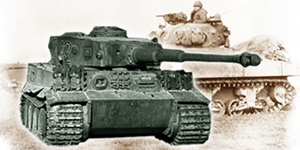
WW2 Tanks




























WW2 tanks posters
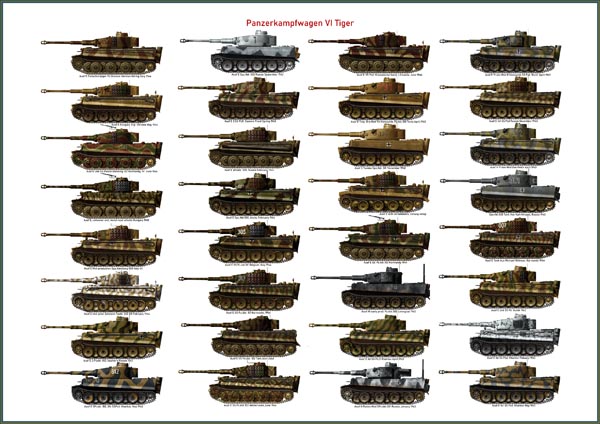
All Tiger tanks liveries.
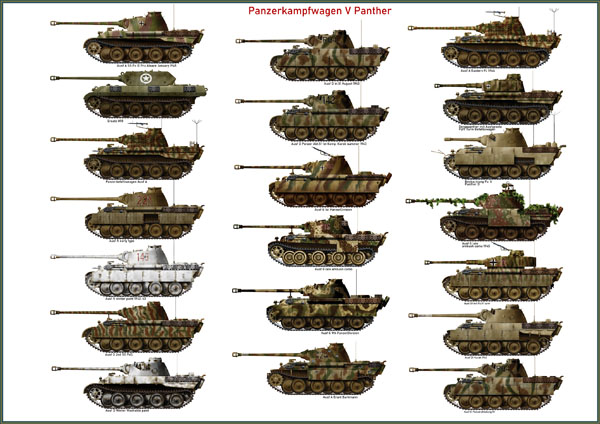
Panther liveries and variants
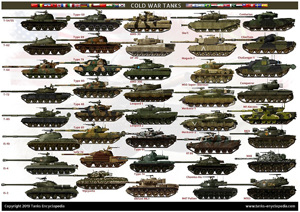
WW2 Armour - All tanks
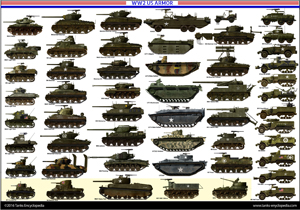
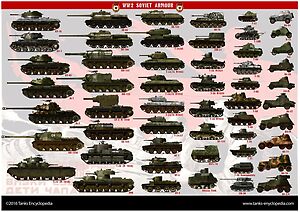





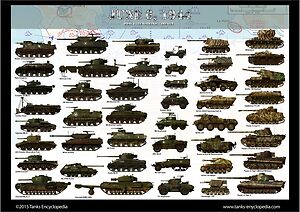



Tanks aces and single tanks series

Find more there

Museums, Movies, Books & Games
The Tanks and Armor in pop culture
Tanks and armored vehicles in general are only really grasped when seen first person: The mass, the scale, it's all there. Explore also the way tanks were covered in the movie industry, in books and in video games.Movies:
Best tanks movie on warhistoryonline.com
On imdb.com
On bestsimilar.com/
miltours.com
liveabout.com/
watchmojo.com
Video Games:
pcgamesn.com
historyhit.com
levvvel.com
vg247.com/best-tank-games
mmobomb.com/
alienwarearena.com
